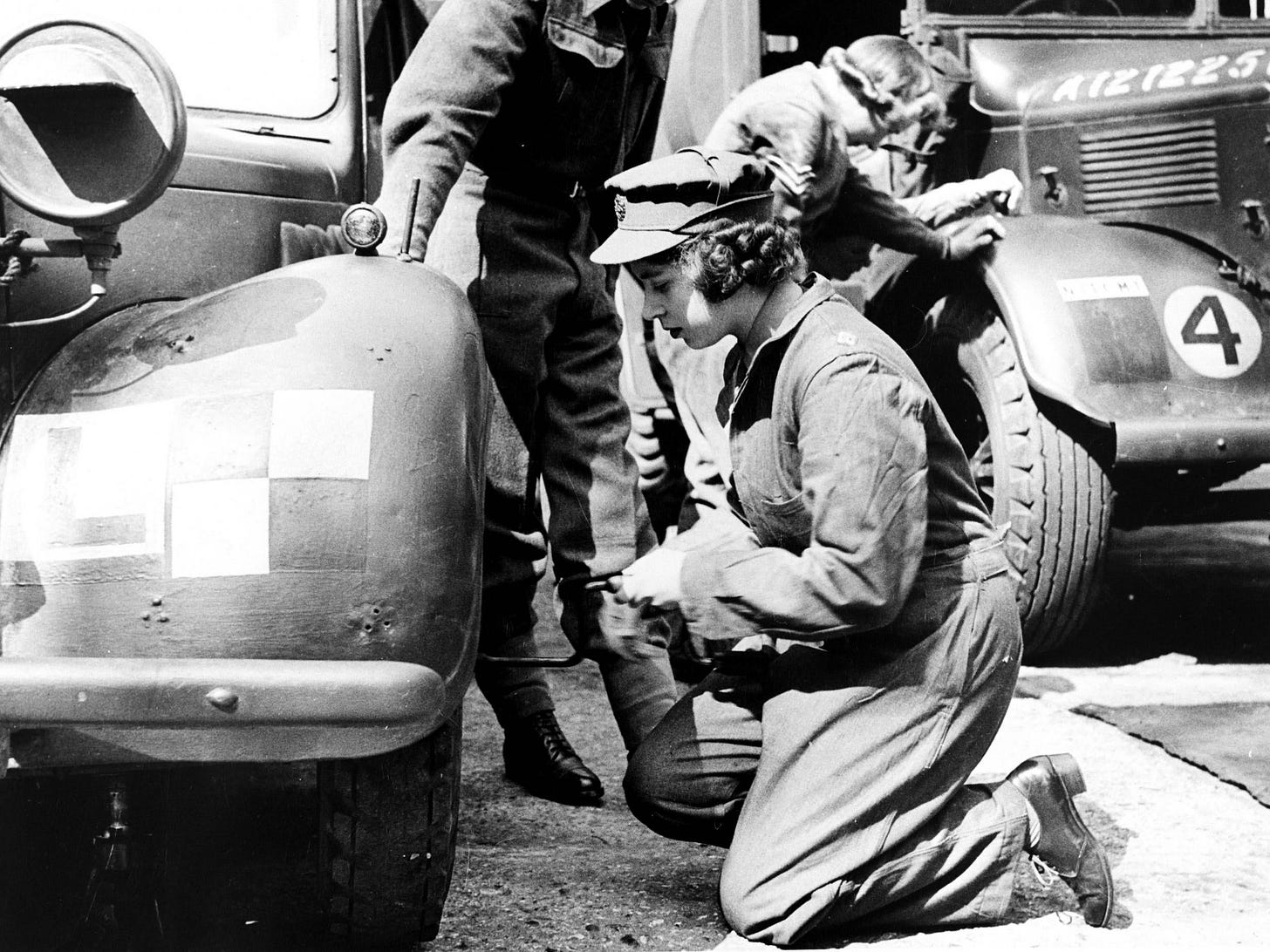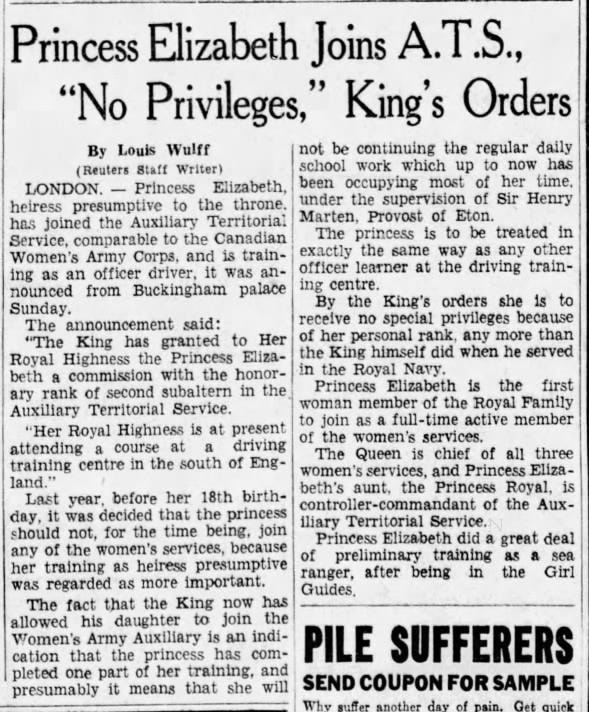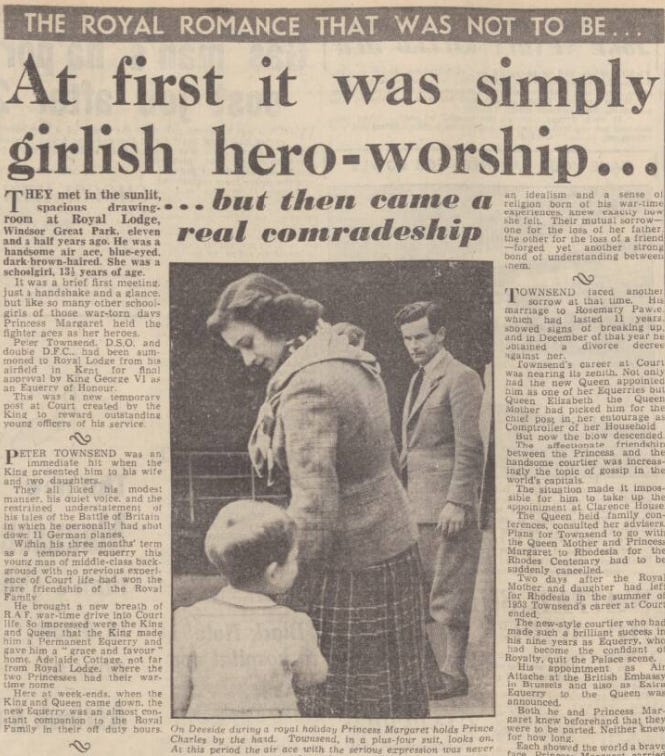The Royal Beat: The Rota and the Revolt
part IV of an exclusive four part series, examining how royal reporting evolved to be a palace partnership
Welcome to the final installment of our four-part series tracing the tangled evolution of royal reporting. After four centuries of palace intrigue, press control, and the public caught in between, we’ve finally arrived at the modern era…where the royal press corps gains almost unfettered access, but only in exchange for deference.
In this paid-subscriber exclusive, we’ll explore how palace-sanctioned journalism replaced rogue gossip and critique… and ask: what did we lose in the process?
Let’s find out.
Reverence and Post-War Reporting
During World War II, press coverage of the monarchy was near-sacred. King George VI and Queen Elizabeth (later the Queen Mother) were portrayed as steadfast wartime symbols, refusing to flee London during the Blitz. Photos and writeups of their visits to bomb sites, and of Princess Elizabeth joining the war effort in uniform, were framed as models of national unity.
The Ministry of Information, working in tandem with the Palace, tightly managed the narrative. There was little room for scrutiny—only admiration.
But after the war, as Britain rebuilt itself and the press regained its independence, royal coverage began to shift. Newsrooms were changing, audiences were more media-savvy, and a younger generation of royals (and reporters) were stepping into the spotlight.
Among them was Joan Reeder, a reporter for the Daily Mirror, who is often credited as the first full-time royal correspondent for a national newspaper. In an era when few women held permanent reporting posts, let alone high-profile beats, her appointment was groundbreaking.
Reeder was one of the first journalists to learn of the death of King George VI in 1952. She covered the solemn transition to Elizabeth II’s reign, with one of the most significant moments being the 1953 coronation of Queen Elizabeth II.
This was the first Coronation to be televised, despite internal debate at the Palace and resistance from Prime Minister Churchill. Cameras were ultimately allowed inside Westminster Abbey, and the moment marked a significant media milestone. Over 27 million viewers tuned in, many on newly purchased TV sets. Abroad, reels were shipped to theaters and television networks within days.
The monarchy had never been more visible, or more carefully staged for the lens.
The coronation did more than reinforce Queen Elizabeth’s legitimacy. It also signaled the dawn of “image as authority.” For the press, the televised coronation was a lesson: visuals now mattered just as much as narrative. And for the Palace, it was a proof of concept that modern monarchy could invite media attention without losing any control…at least for the moment.
For Reeder, the coverage didn’t stop at the ceremonial moments. She was also among the first reporters to break the news of Princess Margaret’s relationship with Group Captain Peter Townsend. That story would dominate headlines, challenge royal protocols, and, ultimately, hint at the complicated relationship between the Crown and the press in the postwar era.
By the late 1950s, it was clear that the tone of royal reporting was changing. While Queen Elizabeth II represented duty, restraint, and continuity, her younger sister Princess Margaret came to embody something else entirely: style, rebellion, and the ~tantalizing~ possibility of a royal breaking the mold.
She was photographed at nightclubs, speculated about in gossip columns, and scrutinized with growing boldness. She was also a reminder to Buckingham Palace that they could issue all the formal statements and scheduled photo calls they liked, but they were no longer the only game in town. A well-placed camera or anonymous source could now shape public perception just as effectively as an official announcement.
More and more, carefully choreographed coverage of the royals and their public duties began to emerge, accompanied by a looser, more speculative kind of journalism surrounding other royals in their “downtime.” Readers were getting hooked on behind-the-scenes stories and emotional entanglements. And of course, the tabloids were happy to oblige.
The Need for Controlled Access
As the press evolved, so too did the Palace’s media strategy. The traditional balance (access in exchange for deference) was no longer enough. Journalists with cameras were everywhere now, and the demand for royal stories far outstripped what the Court Circular or official photo calls could satisfy.
In an effort to modernize the monarchy’s image, and perhaps reclaim control, the Palace allowed unprecedented access for a new kind of royal project in the late 1960s: Royal Family, a 105-minute color documentary to be broadcast across Britain. The film followed the Windsors through their daily lives, state duties, and holidays at Balmoral. It was meant to humanize the monarchy in much the same way Victoria and Albert had done a century earlier: by embracing bourgeois values and domestic respectability.
But the documentary was an awkward fit for an institution built on mystique. Its scenes of family barbecues and casual breakfasts were accompanied by a lofty, almost absurd voiceover in the style of a traditional newsreel. Narrator Michael Flanders declared at one point, “Monarchy does not lie in the power it gives to the sovereign, but in the power it denies to anyone else”—a grand pronouncement that I love to imagine was layered over footage of Prince Philip grilling sausages.
Rather than endearing the royals to the public, the film exposed the flaws inherent to the Crown’s PR instincts. Far from relatable, the Windsors came off as curated and stiff, even in their downtime. And it seems that they knew it wasn’t a good look. Royal Family aired just twice in full—once in 1969 and again in 1977—before being quietly locked away in the royal archives. Only brief clips have been made available since, including a short breakfast scene released by the National Portrait Gallery in 2011 for the Queen’s Diamond Jubilee. To this day, the full film remains notoriously difficult to access.
What was meant as a gesture of transparency had the opposite effect. Instead of satisfying public curiosity, the documentary whetted appetites for more. That small glimpse behind the curtain felt more like opening Pandora’s box.
That “catch-22,” as Lady Pamela Hicks once called it, came into sharp focus in 1976. That year, it was the press (not a palace briefing) which effectively broke the story of Princess Margaret’s separation from Antony Armstrong-Jones, the Earl of Snowdon. Though the couple had long struggled behind palace walls, paparazzi photographs of Margaret vacationing on a private Caribbean island with a younger man pushed the crisis into the public domain. Many now argue that it was the media frenzy that ultimately sealed the marriage’s fate.
The Palace had lost its ability to manage the narrative in real-time. And if even a royal marriage could be upended by press intrusion, the need for a new system—one that could manage who saw what, and when—became impossible to ignore.
Enter the Royal Rota.
A New Playbook
By the 1980s, palace aides, royal correspondents, and newspaper editors didn’t agree on much, but they all recognized one thing: royal events were becoming unmanageable. Photographers jostled for position, reporters shouted their questions, and tight venues (schools, hospital wards, village halls) simply could not hold the swelling press pack.
The solution, hammered out the late 1970s, was a formal pool system modelled on the wire-service rota already used by still photographers.
The idea: one British print reporter and one photographer would cover every royal engagement “on behalf of everyone.” After an event, they would file copy and pictures that all other outlets could publish free of charge. In theory, the public (and the taxpayer) still got maximum transparency…just with fewer elbows in the room.
The system still operates much like it did 40 years ago:
Step 1: Duty Rotation. Ten (or so) accredited British newspaper reporters (originally including no magazinesm just broadsheets) are scheduledfor turns “inside” an engagement. Today the domestic list includes names such as Rebecca English (the Rota’s “captian,” representing the Daily Mail) and Russell Myers (The Mirror). A separate captain, currently Valentine Low of The Times, runs foreign-tour rotations.












